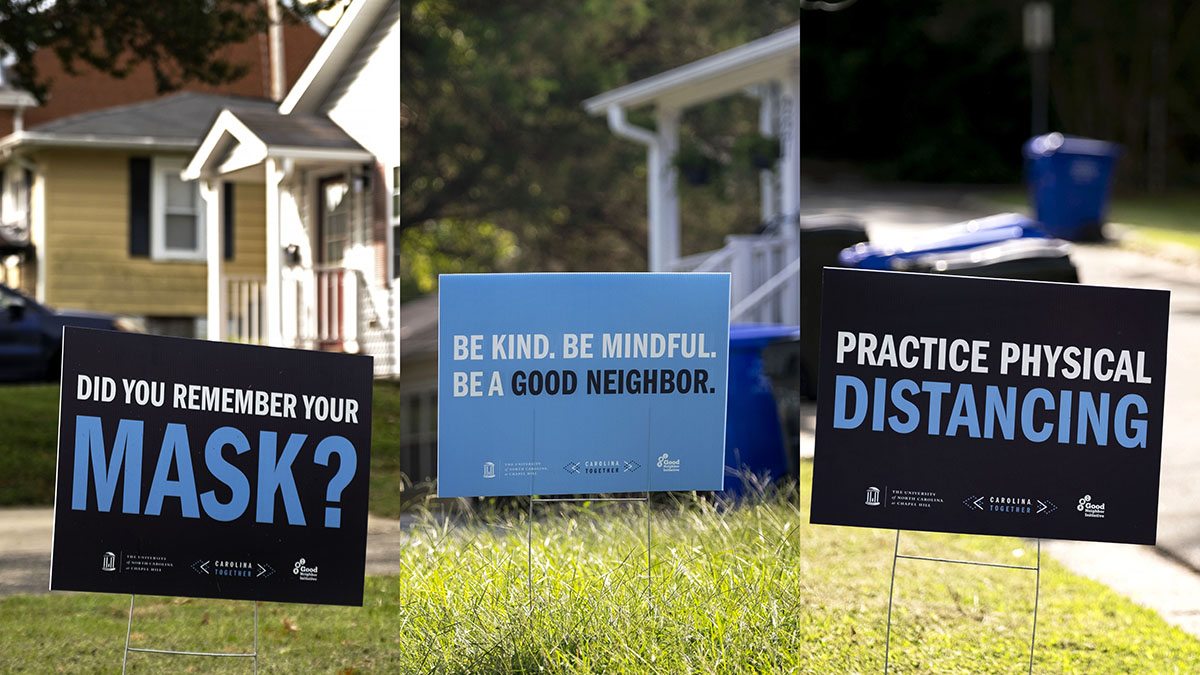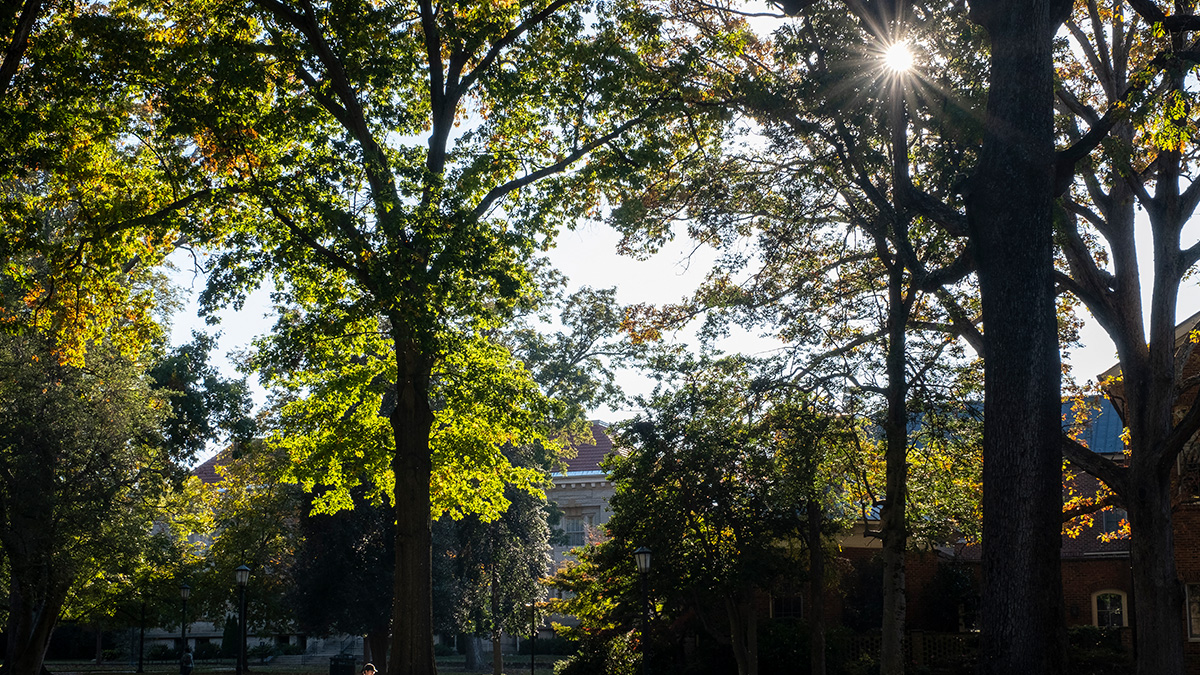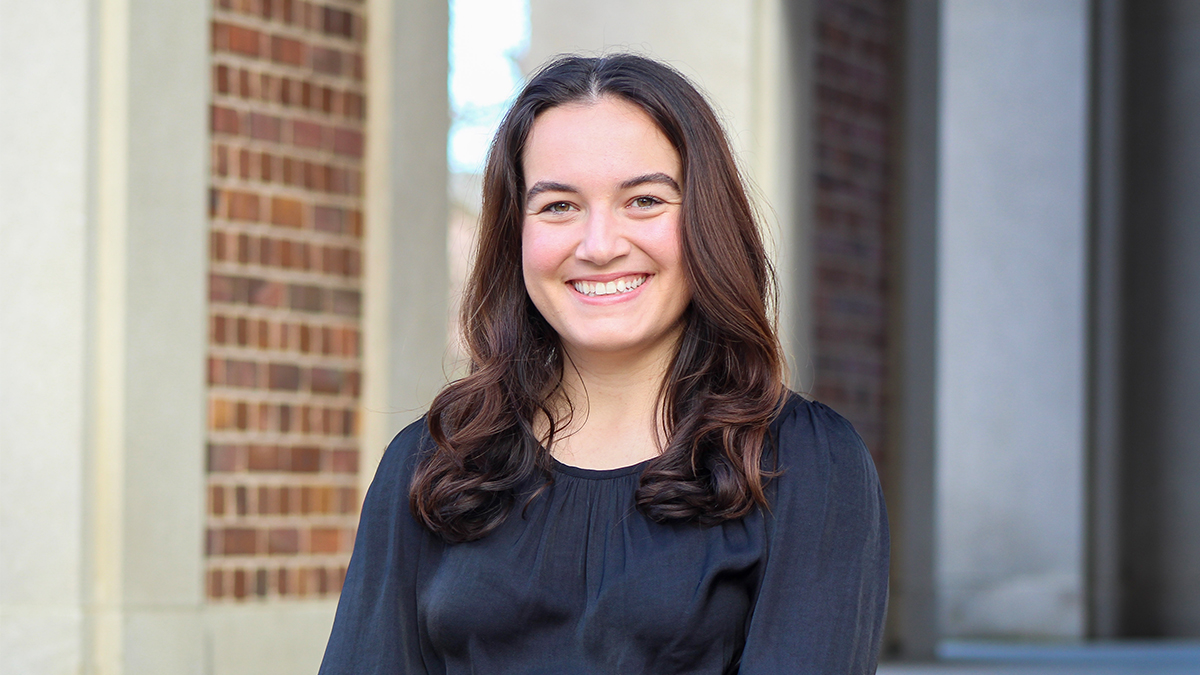Making good neighbors
The Good Neighbor Initiative, in its 17th year of educating students on what it means to be a good neighbor, has adapted to the times.

Noise, trash and parking.
Usually, these are the main issues on the minds of residents in Chapel Hill’s downtown neighborhoods when a new semester begins and students move in.
Not now.
The Good Neighbor Initiative, in its 17th year of educating students on what it means to be a good neighbor, has adapted to the times. Focusing on student residents in Chapel Hill’s historically Black neighborhoods of Northside and Pine Knolls and other areas near campus, the initiative promotes being a good neighbor not just in the usual ways, but through behavior related to keeping everyone healthy during the pandemic.
In a typical fall semester, volunteers from campus and community would visit around 1,200 homes in neighborhoods on the day before classes begin. “We knock on everybody’s door, regardless of whether they’re a student or a permanent resident, and we talk about the Good Neighbor Initiative, its mission and its purpose,” said Aaron Bachenheimer, executive director of Off-Campus Student Life and Community Partnerships in Student Affairs.
The University’s partners in the year-round initiative are the towns of Chapel Hill and Carrboro, Chapel Hill Downtown Partnership, EmPOWERment Inc. and the Marian Cheek Jackson Center for Saving and Making History.
The pandemic calls
As the University moved to all-remote instruction and students engaged in their academic work off-campus, the initiative also changed. The goals are the same, but the pandemic calls students to be more aware and responsible.
Instead of going door-to-door, the initiative purchased yard signs reminding everyone of the three Ws of wearing masks, washing hands and waiting 6 feet apart. Volunteers, permanent residents and apartment complex management staff have placed the signs in visible areas. Local parks and recreation personnel placed signs along trails.
In addition to promoting good public health practices, the initiative tells students about local and state ordinances for gatherings and the implications of not complying with those ordinances.
“We’ve stressed the best ways to have gatherings,” Bachenheimer said. “They need to be small and with the same, consistent group of friends. Then we describe the implications of behavior in terms of both spread within the student population and the expectations of neighbors.”
More than the expectations and ordinances, it’s about care. Bachenheimer said students should know that although “it may feel like residents are frustrated or angry, in most cases they’re really just scared and concerned for their health and well-being. They’re concerned for your health and well-being. They walk past you in the neighborhood while walking the dog. They walk past you in the grocery store, and they’re concerned.
“They care about students. We always share that message in the Good Neighbor Initiative. Most residents in downtown neighborhoods genuinely love students and the energy they bring to the community and want students to be part of the community.”
Delores Bailey, longtime Northside resident and community organizer, agrees.
Bailey is executive director of EmPOWERment Inc., a Chapel Hill nonprofit that serves the Orange County area by promoting local housing, community organizing and economic development.
A Northside resident since 1975, Bailey said that the Good Neighbor Initiative grew from the annual National Night Out, which connects law enforcement with local neighbors. EmPOWERment Inc. helped morph the event into the Good Neighbor Initiative.
“We started going around the neighborhood giving water to parents and students who were moving in August, starting a week before school began. It was about shaking hands and reminding parents that the students were living in the neighborhood,” Bailey said.
The initiative started to grow after the University hired a person to join discussions about what makes good neighbors, Bailey said.
“We wanted young people moving into the neighborhood to understand the importance of our neighborhood to us and that we welcome them to the community,” she said. “It was really about enabling permanent residents to show and tell them that we really do have an interest in them being here and for them to understand that they are welcomed in this neighborhood. Let us show you how we act. It’s not us versus them.”
Being an anti-racist ally
With the Jackson Center, which helps build community in Chapel Hill’s historically Black neighborhoods, the initiative also helps students understand how practicing good public health intersects with being an anti-racist ally.
George Barrett, executive director of the Jackson Center, sees the change in messaging. “The communications with students about being a good neighbor uses a three-pronged strategy with the same messages we do every year, but now stressing health and safety during the pandemic,” Barrett said “Then there’s an element of racial equity, especially with a lot of older Black residents in the neighborhood.”
“If you live in Northside, you likely have neighbors who fall into potentially one, two or even three really high-risk groups related to COVID-19, whether it is a race, age or income status,” Bachenheimer said. “These individuals are justifiably concerned. If you are looking for ways to be an ally in your community, if you consider yourself an anti-racist activist, then you can follow the lead of a student I spoke with recently, who said, ‘If you blacked out your Instagram or stuck a Black Lives Matter sign in your yard, but you’re playing beer pong in your yard in the neighborhood with 20 friends, that’s incongruent.’ Students should think about how their behavior impacts the community, not just in their immediate view, but all around the community.”
“Aha” moments
The community’s pulse is exactly what Bachenheimer checks every Monday morning when he meets with representatives from Chapel Hill Police and UNC Police, Chapel Hill Fire and Emergency Management, Orange County Health Department and other local agencies.
The group looks at recent calls from residents about student behavior. Residents can alert the University and authorities through many ways, including an online student conduct referral form, by emailing or calling Bachenheimer or by calling 911.
The group forms appropriate responses for complaints that range from small offenses to rare egregious violations for which the town may issue a citation.
For most complaints, Bachenheimer and a Chapel Hill police officer visit students. Bachenheimer’s office then tracks behavior at that property to make sure they are not making repeated visits to the same place.
Students often have an “Aha” moment during those initial visits, Bachenheimer said. “It could be piled-up trash, a loud party or too many people playing a game. The students don’t realize how their behavior conflicts with community standards and, especially during a pandemic, how some behavior makes neighbors concerned not only for their well-being, but that of the students.”
The Good Neighbor Initiative doesn’t create policy or enforce policy,” Bachenheimer said. “We’ve historically played a role, and this year more than ever, it’s really educational as we communicate with students.”
Students can register parties with the University and town. Then, if someone makes a noise complaint, the student receives a text or a call from the town rather than police showing up at their house. The Good Neighbor Initiative also tells permanent residents what to expect if they call 911 about a registered party.
‘People can’t get together’
Until the pandemic, the initiative usually began with the door-knocking campaign.
Bailey has honed the front-porch message to a practiced spiel, “Hi, I’m Delores, from the neighborhood and I want to welcome you. Here’s a package of information about things that students can do to be a good neighbor. On September 3rd, we’re going to have a neighborhood night out party. We invite you to come.”
A few weeks later, a cookout at the Hargraves Center would bring hundreds of residents and students together, a night that year-round residents look forward to every year.
Not now.
“It’s heartbreaking that people can’t get together,” Bachenheimer said. There are family members living in the neighborhood who haven’t seen each other in months. So, we ask students to recognize that there are people who have been self-quarantining for months out of fear and concern for their health and well-being.”
Student contributions
Student participation also differs. Normally, Student Affairs recruits volunteers from across the student population. This year Kurt Ribisl, the Jo Anne Earp Distinguished Professor in UNC’s Gillings School of Global Public Health, is working with the school’s Minority Student Caucus, a graduate student group interested in Northside. Bachenheimer said that those 10-to-15 graduate students and the Jackson Center’s student leadership team met at least twice to determine how to enhance existing messaging to address pandemic-related concerns.
The students see a need for more stories and videos with the voices of students and community members, Bachenheimer said. The students hope to add more compassion to the messages by stressing unity of care for all people.
Barrett, who knows the neighborhood and its people, thinks the work by Carolina students is critical. In fact, he started at the center as a volunteer student, worked there through an AmeriCorps job, then served as associate director before becoming executive director this year.
The center’s student intern works with Bachenheimer in planning and organizing around 100 volunteers, coordinates and executes events, and recruits local businesses to sponsor events and donate food and raffle prizes.
In addition to building intergenerational communication, the center’s student leaders and neighbors are interested in forming a group to advocate on behalf of the neighborhood in settings such as town council meetings. The students also plan to conduct outreach at key Northside locations when students are out, such as on football game days, to hand out masks and promote the Good Neighbor Initiative.
All of the partners hope for a return to times when neighbors can safely be together in person.
“There’s something about the eye-to-eye contact,” said Bailey. “I believe the students understand the neighborhood experience a bit better when they get to know somebody in the neighborhood.”




